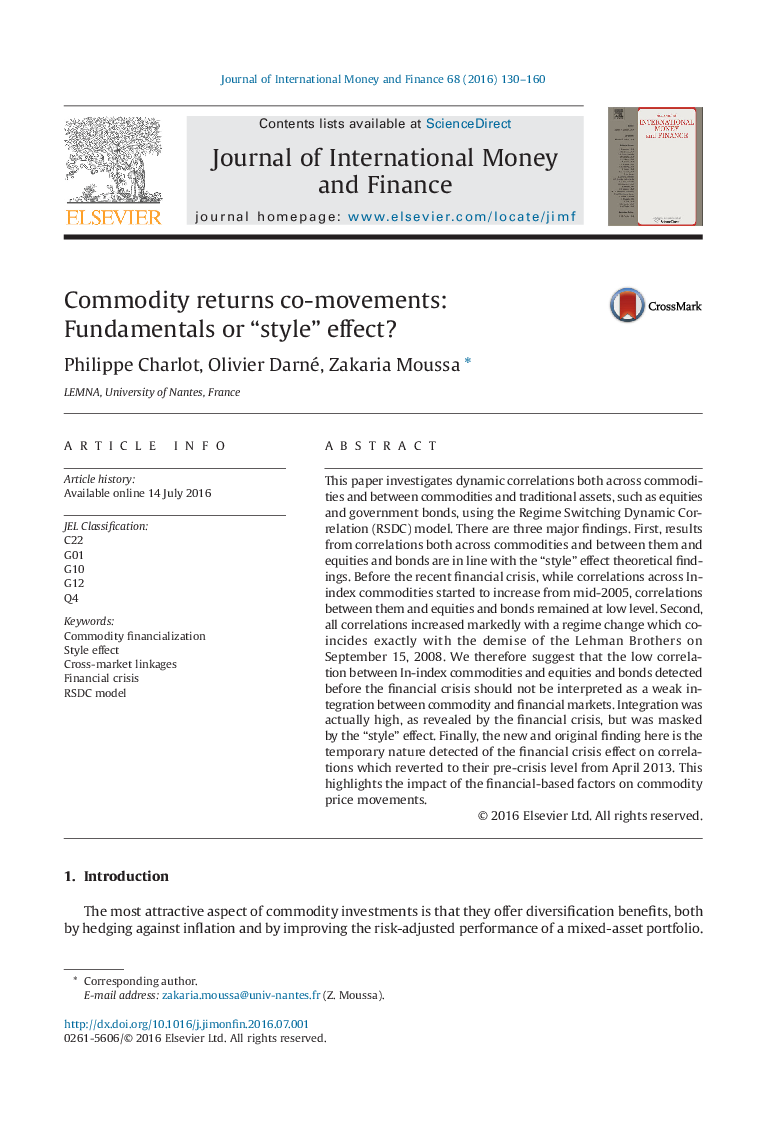| Article ID | Journal | Published Year | Pages | File Type |
|---|---|---|---|---|
| 964513 | Journal of International Money and Finance | 2016 | 31 Pages |
•We review correlations across commodities and between them and financial assets.•We employ the Regime Switching for the Dynamic Conditional Correlation model.•We provide new evidence for the commodity market financialization.•A strong cross-market linkage was temporarily masked by the “style” effect.•The recent financial crisis had only temporary effects on correlation trend.
This paper investigates dynamic correlations both across commodities and between commodities and traditional assets, such as equities and government bonds, using the Regime Switching Dynamic Correlation (RSDC) model. There are three major findings. First, results from correlations both across commodities and between them and equities and bonds are in line with the “style” effect theoretical findings. Before the recent financial crisis, while correlations across In-index commodities started to increase from mid-2005, correlations between them and equities and bonds remained at low level. Second, all correlations increased markedly with a regime change which coincides exactly with the demise of the Lehman Brothers on September 15, 2008. We therefore suggest that the low correlation between In-index commodities and equities and bonds detected before the financial crisis should not be interpreted as a weak integration between commodity and financial markets. Integration was actually high, as revealed by the financial crisis, but was masked by the “style” effect. Finally, the new and original finding here is the temporary nature detected of the financial crisis effect on correlations which reverted to their pre-crisis level from April 2013. This highlights the impact of the financial-based factors on commodity price movements.
